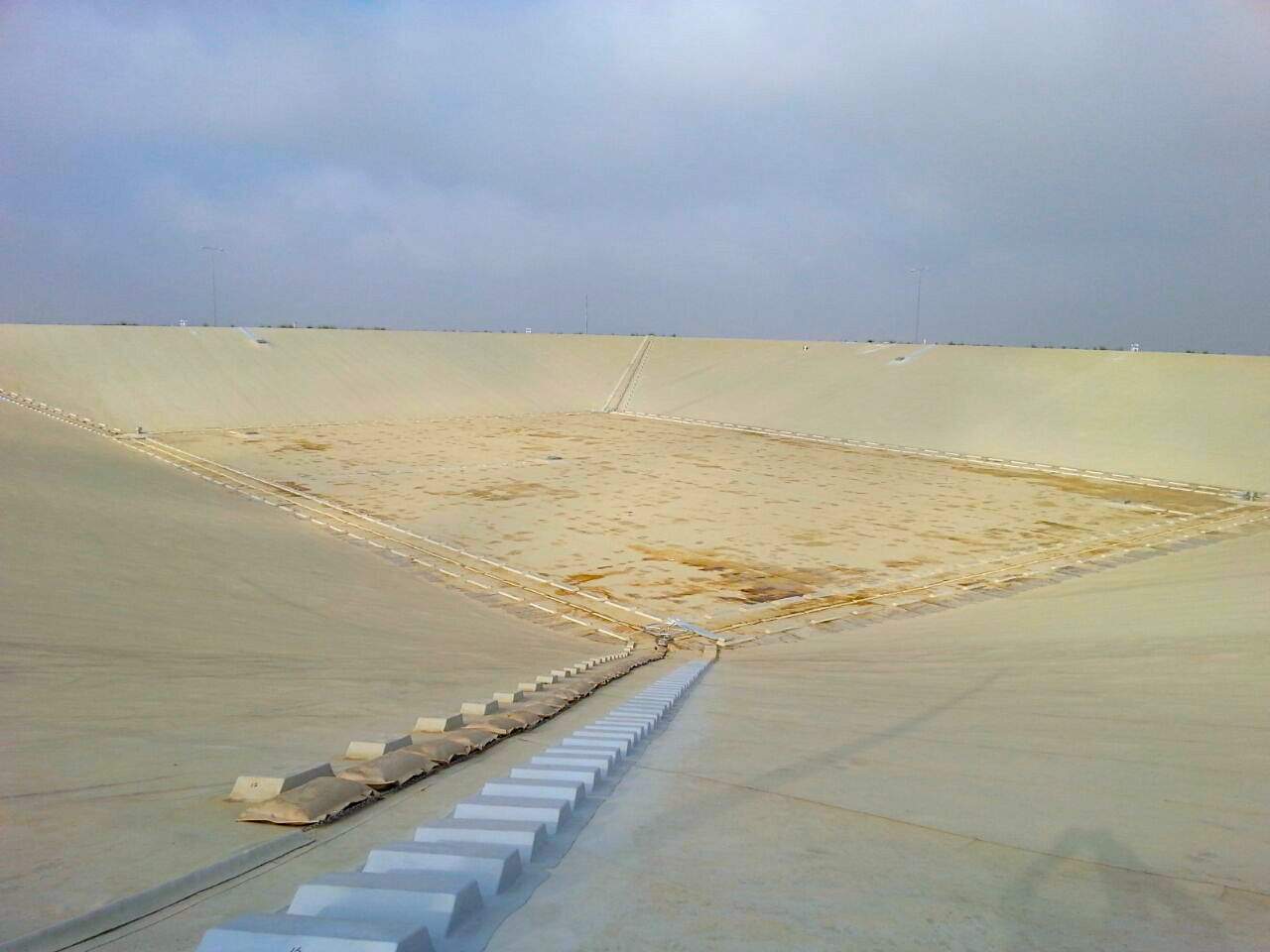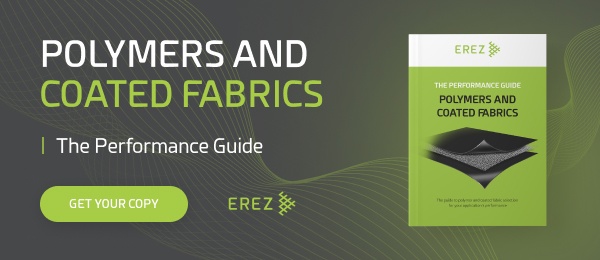Advanced Floating Cover Materials for Reservoir Protection and Sustainability 
Environmental Control, SustainabilityMay 30, 2023
A floating cover plays a crucial role in safeguarding potable water, wastewater, and various other reservoirs from environmental contamination and evaporation losses. Floating covers can also prevent environmental contamination from wastewater sources by reducing wind-blown spray or odor pollution. As the demand for reliable and sustainable reservoir protection solutions continues to grow, so do the R&D efforts of coated fabric manufacturers to innovate in floating cover materials.
This article delves into the latest floating cover material advancements and explores their profound impact on reservoir protection and sustainability.
Reservoirs used for drinking water storage, wastewater treatment, or industrial processes, face numerous challenges that can jeopardize water quality and availability. A floating cover provides an effective barrier against external contaminants, reduce water loss through evaporation, and minimize the risk of algae growth and contamination.
Manufacturers have made significant strides in developing solutions to address the challenges faced by reservoir operators.
The Floating Cover Challenges
By comprehending the floating cover challenges, we can better appreciate the importance of materials in ensuring their effectiveness and long-term viability. In this section, we will explore the key challenges encountered by floating covers and the role that materials used in these products play in providing a solution.
Environmental Contamination
External Contaminants – Reservoirs are susceptible to external contaminants such as dust, debris, pollutants, and wildlife droppings. These contaminants can compromise water quality and pose risks to public health.
Algae Growth – Sunlight exposure and nutrient availability in reservoirs can lead to excessive algae growth. Uncontrolled algal blooms not only affect water quality but also impact treatment processes and decrease operational efficiency.
Water Loss through Evaporation
Significant Evaporation Rates – Open reservoirs are highly prone to water loss through evaporation, particularly in arid and high-temperature regions. This diminishes the available water supply and increases the strain on water resources.
Economic Implications – Evaporation-related water loss leads to increased operational costs, reduced reservoir capacity, and higher energy requirements for water replenishment.
Climate Factors and Extreme Conditions
UV Radiation – Prolonged exposure to UV radiation can degrade materials, reducing their lifespan and compromising their integrity. UV resistance is crucial in sun-drenched regions.
Temperature Fluctuations – Reservoirs experience temperature variations, including freeze-thaw cycles and extreme heat. Materials must withstand these fluctuations without compromising their structural integrity or performance.
Wind and Storms – High winds and severe storms can subject floating covers to significant stress, requiring materials with adequate strength and flexibility to withstand these forces.
Maintenance and Durability
Mechanical Damage – Floating covers can be vulnerable to mechanical damage caused by contact with sharp objects, wildlife activity, or operational equipment. Robust materials are essential to withstand such potential hazards.
Chemical Compatibility – Reservoirs may contain chemicals such as disinfectants, industrial effluents, or agricultural runoff. Floating cover materials must be chemically compatible to avoid degradation or contamination risks.
Materials play a vital role in addressing these challenges effectively. Advanced material properties, such as resistance to UV radiation, chemical compatibility, mechanical strength, and durability, help ensure the longevity and performance. Through ongoing research and development, manufacturers continually seek to enhance these material characteristics, enabling a floating cover to withstand environmental challenges and deliver robust reservoir protection.
By understanding and addressing these challenges through material innovation, the industry can provide reservoir operators with reliable, cost-effective, and sustainable solutions. In the subsequent sections, we will delve into the state-of-the-art materials and advancements that help overcome these challenges, paving the way for improved reservoir protection and operational efficiency.
State-of-the-Art Floating Cover Materials
Erez, a leading manufacturer in the industry, employs breakthrough polymer blending techniques to create a remarkable PVC/Ethylene Interpolymer alloy. When this unique alloy is combined with high-quality polyester or polypropylene base fabrics using hot melt or spread coating, it yields a state-of-the-art material for a floating cover. In this section, we will explore the benefits and effectiveness of these advanced materials, highlighting their key attributes that contribute to enhanced reservoir protection and operational performance.
Strength and Durability
The PVC/Ethylene Interpolymer alloy developed by Erez exhibits exceptional strength and durability, providing robust protection for reservoirs. The polymer blending process enhances the material’s tensile strength, tear resistance, and puncture resistance, ensuring reliable long-term performance in challenging environments. These materials effectively withstand mechanical stresses, such as contact with sharp objects or wildlife activity, minimizing the risk of damage and the need for frequent maintenance.
Enhanced Chemical Compatibility
The PVC/Ethylene Interpolymer alloy demonstrates remarkable chemical compatibility, that enables a floating cover to withstand exposure to various chemicals. This compatibility ensures that the materials remain resistant to degradation and do not compromise water quality. With this feature, operators can confidently utilize the floating cover in a wide range of applications, including those involving disinfectants, industrial effluents, or agricultural runoff.
UV Resistance and Weatherability
Erez’s materials for floating covers exhibit superior UV resistance and weatherability. The PVC/Ethylene Interpolymer alloy, in conjunction with the high-quality polyester base fabrics, withstands prolonged exposure to UV radiation without significant degradation. This attribute ensures the material’s longevity and maintains its structural integrity, even in sun-drenched regions. Additionally, these materials effectively endure temperature fluctuations, freeze-thaw cycles, and high winds, providing resilience and reliability in various climatic conditions.
Versatile and Customizable Solutions
Erez’s materials offer versatility and customization options to meet specific reservoir requirements. The hot melt or spread coating techniques allow for the application of the PVC/Ethylene Interpolymer alloy onto different high-quality polyester or polypropylene base fabrics. This versatility enables manufacturers to tailor floating covers to specific project needs, considering factors such as desired strength, flexibility, permeability, or thickness. Such customization ensures optimal performance and compatibility with reservoir conditions.
Sustainability and Environmental Consciousness
Erez’s commitment to sustainability is reflected in its material development process. The PVC/Ethylene Interpolymer alloy and the high-quality polyester base fabrics used in the floating covers are designed with eco-friendly considerations. Often made from recycled materials as part of our effort to reduce the carbon footprint associated with your reservoir protection. By employing sustainable materials, Erez provides environmentally responsible solutions that align with the industry’s growing focus on ecological conservation.
Through the utilization of Erez’s breakthrough PVC/Ethylene Interpolymer alloy, combined with high-quality polyester base fabrics, your floating cover benefits from exceptional strength, chemical compatibility, UV resistance, versatility, and sustainability. These materials, derived from innovative polymer blending techniques, contribute to the effectiveness and reliability of floating covers, ensuring superior reservoir protection and operational performance.
Regulatory Standards Associated with Floating Cover Materials
To ensure appropriate safety and quality, floating cover materials must adhere to regulatory standards depending on the application of the body of water the floating cover is used for.
Here are some notable regulatory certifications that govern floating cover material production:
WRAS (Water Regulations Advisory Scheme)
A UK-based certification that ensures materials, such as membranes and coatings, comply with regulations related to public water supplies. This certification validates that floating cover materials do not contribute to water contamination, ensuring the safety and potability of stored water.
AS/NZS 4020
An Australian and New Zealand standard that assesses the suitability of materials for use in contact with drinking water. This certification ensures that the materials used in floating covers comply with strict health and safety regulations, assuring the quality and purity of potable water.
NSF61
A widely recognized certification in North America that focuses on materials’ safety and suitability for use in drinking water systems. The NSF61 evaluates the materials potential to leach contaminants into the water. It ensures that floating covers meet the requirements for clean and safe water storage.
SI-5452
A regulatory standard in several countries that evaluates the resistance of materials to chemical substances and environmental factors. Ensures durability and performance in demanding reservoir conditions. SI-5452 compliance ensures that the floating cover materials can withstand exposure to various chemicals and maintain their integrity over time.
These certifications reassure reservoir operators that the floating covers employed in their facilities not only deliver effective protection but also comply with regulatory requirements.
Erez Takes Reservoir Protection Very Seriously
Through ongoing research and development initiatives, Erez continuously pushes the boundaries of material performance, durability, and eco-friendliness. By aligning with the demands of reservoir operators, we strive to provide sustainable solutions that meet the evolving needs of the industry. We take reservoir protection very seriously and invest heavily in our R&D to produce the most advanced floating cover solutions.
By exploring the latest advancements in material design, we aim to innovate reservoir protection, operational efficiency, and environmental sustainability.

Share this Post



